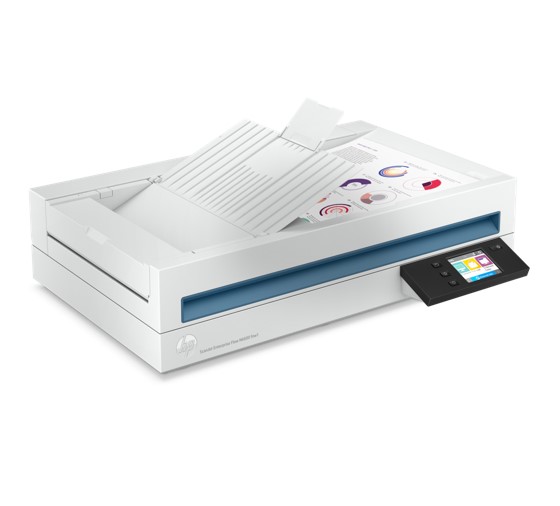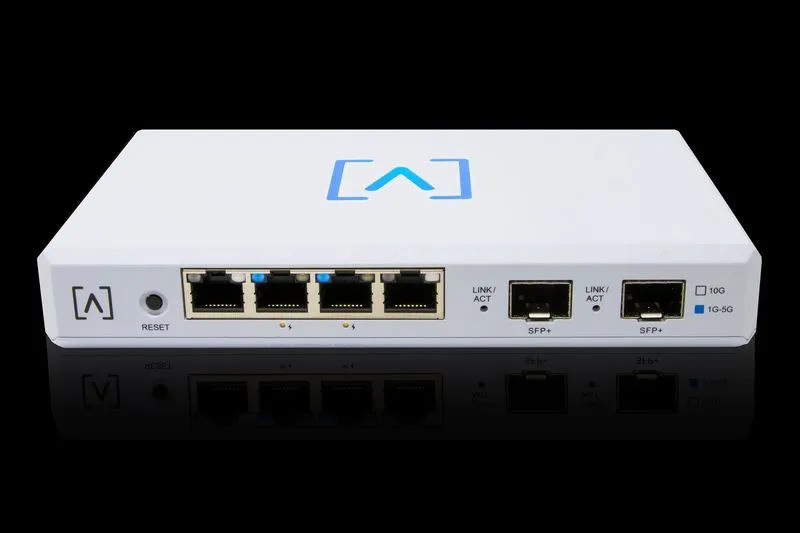HP has introduced four flatbed scanners engineered for use in the office, at home, and in hybrid workspaces somewhere in between.
All of the new devices are designed to be compact, intuitive, and secure, according to Bimal Pathak, HP’s R&D director of hardware platform delivery.
“These are simple to use with advanced software solutions that will simplify digital workflows, and they come with enhanced HP security,” he says.
Available now in most locations worldwide, the new systems include two A4 models and two legal-size models. The A4 units, named the HP ScanJet Pro 2600 f1 and ScanJet Pro 3600 f1, process 25 pages per minute and 30 pages per minute, respectively. The first of the two products has a 1,500-page daily duty cycle, while the latter can handle 3,000 pages per day. Both support duplex scanning and have a 60-page automatic document feeder.
The legal-sized units, named the HP ScanJet Pro N4600 fnw1 and ScanJet Enterprise Flow N660 fnw1, can scan a faster 40 pages per minute and 50 pages per minute, respectively, and have higher duty cycles, ranging from the first unit’s 6,000 pages a day to the second one’s 8,000 pages. Unlike the A4 systems, which provide USB connectivity only, the legal-sized ones also support Ethernet and Wi-Fi. They both offer a 2.8-inch color touchscreen too, in contrast to the A4 models’ LED control panel, and come with a 100-page ADF.
Security features in all four models include secure boot functionality that permits only authorized code to run at startup, as well as firmware validation technology that ensures the systems only accept updates that have been digitally signed by HP.
The HP ScanJet Pro 2600 f1, ScanJet Pro 3600 f1, and HP ScanJet Pro N4600 fnw1 are all compatible with a new version of HP’s Scan application that offers desktop shortcuts and customizable profiles to streamline workflows, a multi-document detection feature that automatically splits items like receipts and business cards into separate images, book scanning technology that flattens curved images, and automated detection and removal of vertical streaks.
“Sometimes you have those faint little black lines in your scan or copy documents,” Pathak says. “We can detect those and remove them for you.”
The ScanJet Enterprise Flow N660 fnw1 runs HP Scan Premium software featuring digital stamping and signatures; document highlighting, redacting, and erasure; and intelligent document capture and classification.
“If you have photos and PDFs, all those things can be put into different folders for you automatically,” Pathak explains.
To help organizations meet sustainability targets, the four products are made from over 21% recycled plastic and shipped in recycled packing materials. They are also ENERGY STAR certified and have a silver EPEAT rating.
Driven in part by the re-opening of long shuttered offices, businesses are buying scanners in growing numbers, according to Keypoint Intelligence, which tracked a 10% increase in scanner shipments last year.
“This growth makes sense,” said Lee Davis, the analyst’s associate director of scanners/solutions, in a press statement. “Businesses accelerated digitization efforts in response to the pandemic, and scanners are an important tool in digitization processes. At the same time, we have observed increased scan volumes across all scanning devices. That means it’s important for businesses to find a platform that can facilitate scanning processes across a wide range of devices.”
All four of its newest scanners, HP says, are also built to accommodate a shift over the last two years toward hybrid work arrangements in which employees split time between home and office. Some 53% of companies expect to continue allowing hybrid work going forward, HP says citing data from Gallup, and 24% expect employees to work exclusively offsite.
In response to that trend, businesses are increasingly transforming offices from places where people come to work to places where they come to collaborate, according to Ryan Sun, HP’s manager of office A4 and scanner product and portfolio management.
“The office is no longer what it was pre-pandemic,” he says. “Companies are looking to create workspaces specifically designed to support kinds of interactions that cannot happen remotely.” IT devices that work best in such environments, he continues, are smaller than their predecessors and better suited to shared use.
The emphasis on security in the new systems reflects surging ransomware activity and attacks of all kinds on home-based workers. “The bottom line is wherever the work happens, the devices must be secure,” Sun says.














